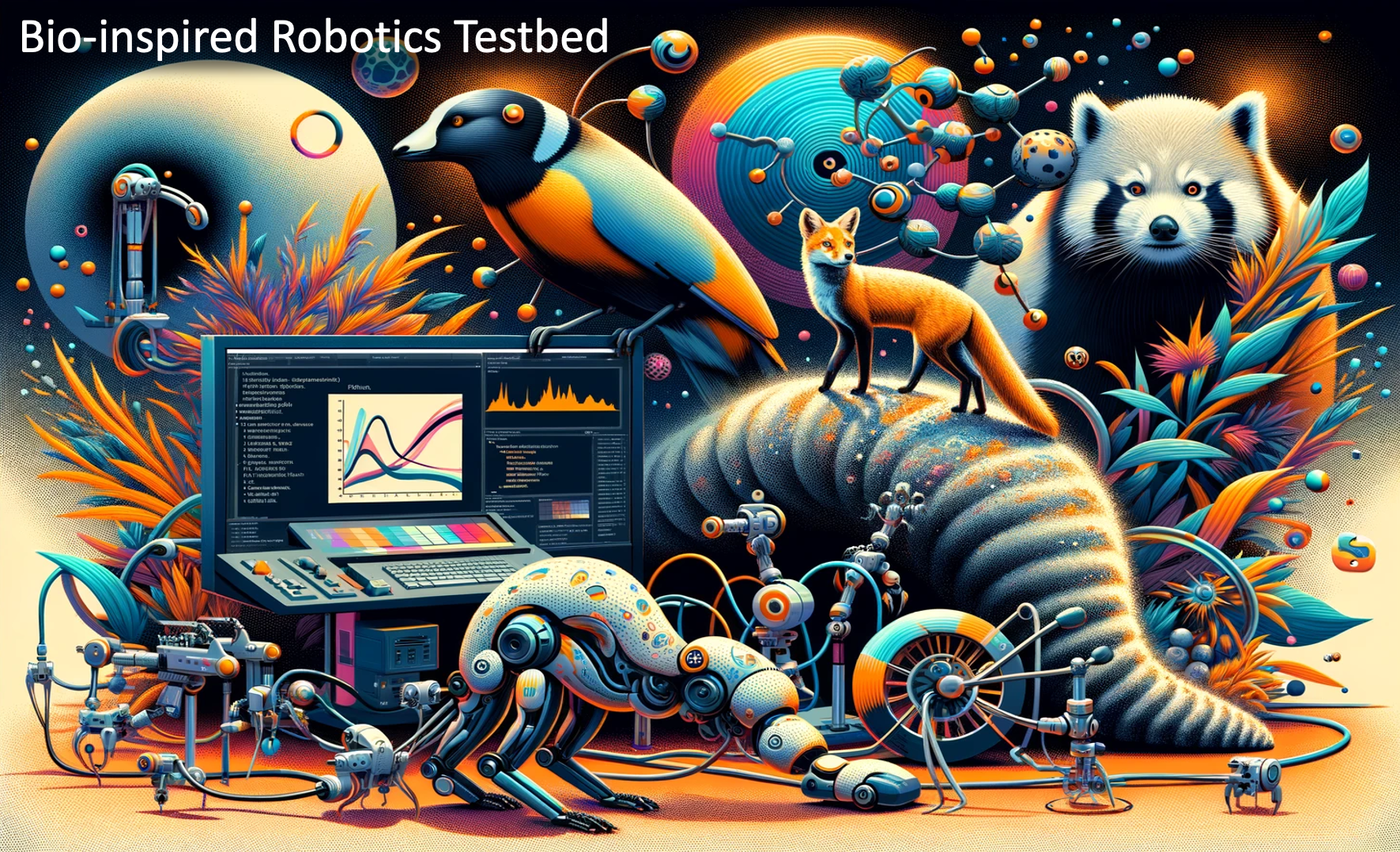The Bio-inspired Robotics Testbed (BRT).
Project description
The Bio-Inspired Robotics Testbed (BRT) represents a significant stride in the convergence of robotics and experimental biology, offering a unique platform that leverages the MuJoCo physics simulator to create a collection of bio-inspired robotics simulation environments. This initiative is more than just a technical tool; it serves as a crucible for cross-disciplinary dialogue and innovation, uniting two fields that, while distinct, share a common goal of understanding and emulating complex biological systems. In the realm of robotics, this testbed addresses a pivotal challenge: the design and control of bio-inspired robots. These robots, inspired by the intricacies of biological organisms, present novel hurdles that contemporary optimization methodologies struggle to surmount. By providing a benchmark specifically tailored to these challenges, the initiative not only facilitates the validation of existing methodologies but also catalyzes the development of new approaches. This is crucial for advancing the field, as it pushes the boundaries of what we can achieve in robotic design and control, drawing inspiration from the most sophisticated systems found in nature. On the biological front, the application of robotics serves as a powerful comparative method. It offers a more controlled environment for conducting comparative studies, essential for dissecting complex behaviors, ecological interactions, and the evolutionary histories of organisms. This perspective is invaluable, as it transcends traditional observational methods, allowing for more controlled analyses. Overall, the Bio-Inspired Robotics Testbed is a testament to the symbiotic potential of robotics and biology. It not only advances our technical capabilities in creating machines that mimic life but also deepens our understanding of the biological phenomena that inspire these creations. This testbed is a stepping stone towards a future where the interplay between robotics and biology yields innovations that are as profound as they are transformative.
BRT distinguishes itself with its capability to effortlessly simulate various morphological variations of bio-inspired robots. This flexibility is largely enabled by the use of the Framework for Parameterized Robot Specifications (FPRS), a framework that centralizes the adaptable definition of a robot's morphology. In FPRS, a 'Specification' acts as a comprehensive bundle, encapsulating all the modifiable parameters that define the robot's form and structure. This approach to morphology parameterization not only simplifies the modification process but also enhances the reproducibility and comparability of different morphological setups within the BRT
The implementation of environments within the BRT adheres to framework defined in the moojoco package. This framework defines an environment as a combination of a parameterized morphology, as defined by FPRS, and a configurable arena. Both the morphology and the arena in this context are essentially generators for MJCF (MuJoCo XML) files, allowing for dynamic and customizable environment creation. This design philosophy ensures that each environment within the BRT is both flexible and specific to the needs of the experiment at hand.
In terms of simulation capabilities, the BRT offers environments in both native MuJoCo and MuJoCo XLA (MJX) formats. This dual availability caters to diverse computational needs and preferences, ensuring that researchers can select the simulation environment that best suits their specific requirements, whether it's the high-fidelity physics of native MuJoCo or the accelerated computation offered by MuJoCo XLA.
In summary, the BRT's unique approach to morphology parameterization through FPRS, adherence to the moojoco framework for environment implementation, and availability in both MuJoCo and MJX formats, collectively contribute to its status as a versatile and powerful tool for bio-inspired robotics research. This tool not only facilitates a deeper exploration of robotic morphologies but also bridges the gap between theoretical research and practical application in the field of bio-inspired robotics.
Current environments
Contributions
Interested in having a model developed? Please fill in this form.
Examples
Preliminary Jupyter Notebook examples can be found here.
Installation
pip install biorobot
Project details
Release history Release notifications | RSS feed
Download files
Download the file for your platform. If you're not sure which to choose, learn more about installing packages.
Source Distribution
Built Distribution
File details
Details for the file biorobot-0.2.8.tar.gz.
File metadata
- Download URL: biorobot-0.2.8.tar.gz
- Upload date:
- Size: 28.1 kB
- Tags: Source
- Uploaded using Trusted Publishing? No
- Uploaded via: twine/5.1.1 CPython/3.12.7
File hashes
| Algorithm | Hash digest | |
|---|---|---|
| SHA256 | 1a241925fe8fe4769600eeadfd2f8aa1001e81a859153191a5ba595524c4a563 |
|
| MD5 | 3da970e22c7c1d7921f192a354cedf59 |
|
| BLAKE2b-256 | a2047574ccb5776f08d2f43b3e8c3c5bcae5dec64bd49c2a071d07788e08f2f0 |
File details
Details for the file biorobot-0.2.8-py3-none-any.whl.
File metadata
- Download URL: biorobot-0.2.8-py3-none-any.whl
- Upload date:
- Size: 45.2 kB
- Tags: Python 3
- Uploaded using Trusted Publishing? No
- Uploaded via: twine/5.1.1 CPython/3.12.7
File hashes
| Algorithm | Hash digest | |
|---|---|---|
| SHA256 | e11ec7857b366ed5f58a356c47f614be4811742e3a4be45331d5caa2bcdabca6 |
|
| MD5 | d2790973ad184bc977c01601728d86ef |
|
| BLAKE2b-256 | 4f4f1b96c11e499459d0b2ef3b08a52f9be0e294ec8bb906a711b273911c8ec1 |












